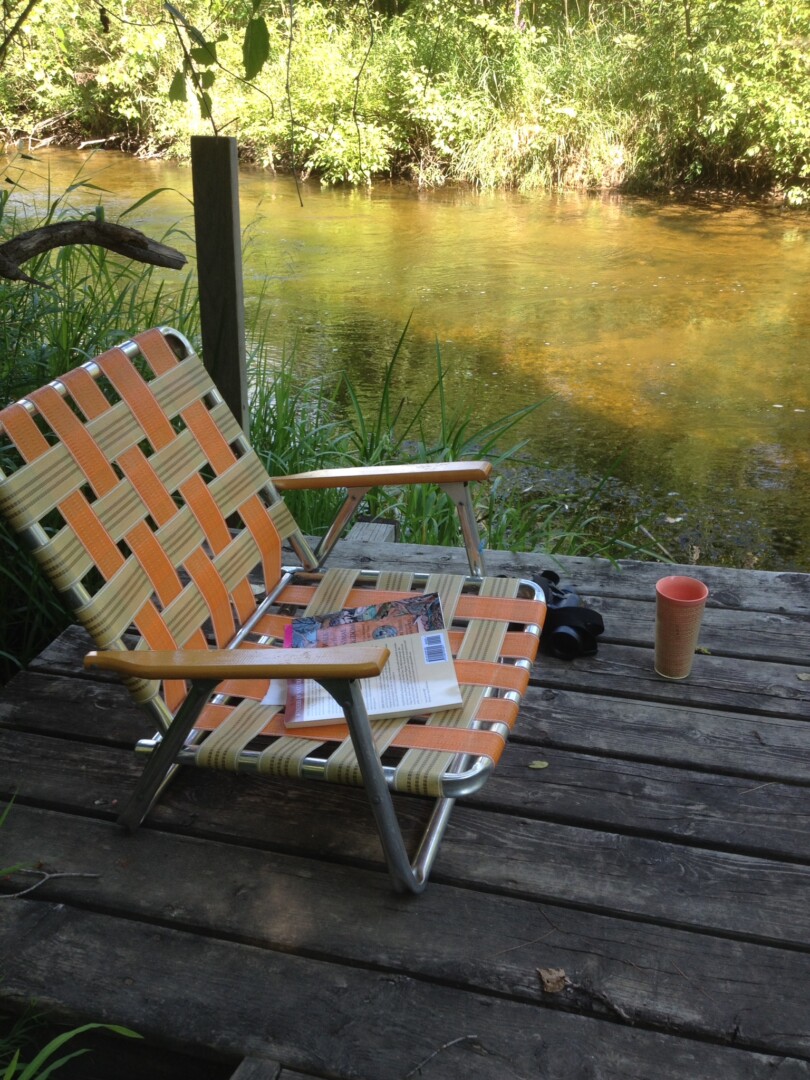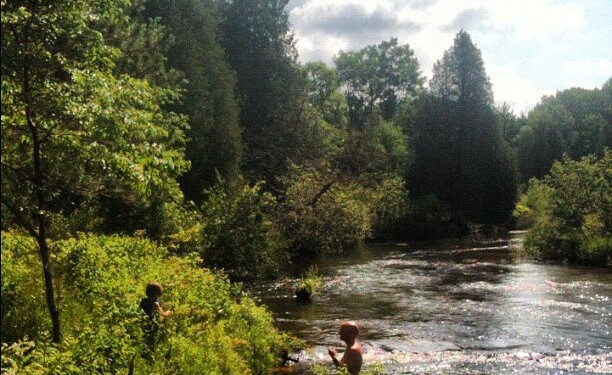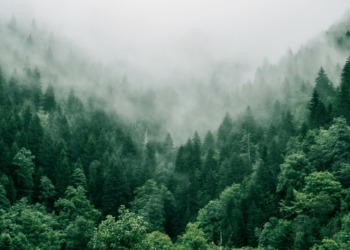Legal systems all over the world are entertaining the idea that animals and vegetation and even bodies of water and landscapes are endowed with “personhood” when human institutions like agribusinesses, real estate development, and corporations are sued for infringement on the rights of non-human beings.
How does this novel litigation apply the term person to non-humans? Are we deeper into a paradigm shift about the relationship between human beings and nature than we have realized? Do we understand that the “modern” or “western” or “industrial” values that we non-indigenous people assume as normative are no longer legally tenable?
The Problem: Human exploitation of Nature
“Only in the past few hundred years,” notes Elizabeth Kolbert, “has it become possible – and come to seem normal – for people to mow down forests, fill in wetlands, and blast away mountains because it suits them.”
She identifies Law Professor Christopher Stone as the first to propose a “thought experiment” in which rights were granted to trees and rocks. Stone’s extension of rights to nature caused consternation and discomfort in the legal community. His friend William O. Douglas used the idea in a 1972 Supreme Court case brought by the Sierra Club against building a resort in Yosemite.
In his dissent, Douglas pointed out that if you can accord the “fiction” of a “legal personality” to ships and corporations “for purposes of the adjudicatory processes…So it should be as respects valleys, alpine meadows, rivers, lakes, estuaries, beaches, ridges, groves of trees, swampland, or even air that feels the destructive pressures of modern technology and modern life.”
Consider the case of Manoomin v. Minnesota, where wild rice, which is a sacred ally and vital nutritional commodity for the White Earth Band of Ojibwe, is the plaintiff:
“This case looks at the rights of wild rice to survive and thrive in local waterways, which the Ojibwe added to their 1855 treaty with the U.S. government. The White Earth Band of Ojibwe, based in present-day Minnesota, has since sued Enbridge Energy’s Line 3 pipeline, which they say will violate the rights of the rice and threaten the health of the ecosystem at large.”
It isn’t only western countries whose forests, agricultural lands, and waters are being threatened by a worldwide rush to development. From rubber plantations in Mayanmar to fossil fuel drilling along the coasts and waterways of West Africa, the question of whether nature should be accorded legal rights has become international.
In Bangladesh, which is “often called the ‘Land of Rivers’ …the Supreme Court … in July 2019 … determined that all 700 rivers have the standing to sue those who harm them in court. This decision marked a milestone in the rights of nature movement– a growing international movement that seeks recognition of ecosystems and species as living entities with legal rights, rather than merely property for human use.”
This legal development, we are told, “places people and nature on a level playing field.” The way this is put, “people and nature” seem to be taken as players from different and, implicitly, separate teams.
It seems to me that the “level playing theme” paradigm is limited by its assumption that we homo sapiens are separate from nature rather than among its components.
Personhood and Law: Granting nature its own rights
Breanna Draxler, an award-winning journalist who describes herself as “based in unceded Duwamish territory known as Seattle,” takes the Supreme Court finding in Citizens United v. Federal Election Commission (FEC 2010) that corporations are persons as an important moment in the history of granting “legal personhood to a watershed or a forest.”
She notes that “granting nature its own rights could provide an avenue to protect specific environments—and the communities that depend on them. ..In that way a watershed could sue on its own behalf and on behalf of other beings – fish and aquatic life- sickened by industrial agricultural pollution.”
The idea here is that if we humans are causing harm to natural entities, the harm accords them legal standing as “persons.”
I am concerned, however, about a fallacy in this reasoning, which resembles the false logic in
An oyster is mortal
Socrates is mortal
Therefore Socrates is an oyster
In the case of natural objects as persons:
Humans are persons
Humans have rights
Natural entities should have rights
Therefore, natural entities should be understood as persons
In other words, in order to preserve wetlands, the wetlands have to be understood as enjoying the same legal status as a person. If this is a legal term useful in sustaining our beloved planet, I am all for it.
From the point of view of Deep Ecology, however, I am worried about endowing natural entities with quasi-human personhood in order for them to have legal standing.
“Person” not only carries human connotation but is defined (Merriam Webster) as a “human individual.” In insisting that animals have rights and therefore are persons, aren’t we positing the human race in a way that is retrogressively normative, and thus dominant?
In the old Ford Motor Company in Hamtramck Michigan, Henry Ford used to hold a ceremony at the commencement of his English School. There was a big cardboard ship and also a “melting pot” on the stage. His workers of many nationalities (except for Jews – he was a ferocious antisemite) came down from a cardboard ship in their national costumes, changed into regular clothes behind the pot (which was being stirred mightily by plant workers) and emerged to cheers and applause as “Americans.”
When we anthropomorphize non-human entities by assimilating them as “persons,” are we perpetuating the destructive idea that humans are the model to be followed, of more inherent value than nature?
What is a “sentient being”? The risk of “speciesism”
From the earliest days of the Association for the Prevention of Cruelty to Animals (ASPCA), courts accorded rights to the creatures they viewed as most resembling human beings. In “Elephant in the Courtroom,” which is about Happy, an elephant held for years in a small Bronx Zoo enclosure, Lawrence Wright argues that species of “non-human animals . . . all four species of great apes, all of the elephants – all cetaceans- are so cognitively complicated that these beings should be persons today.”
Animal rights activist Peter Singer terms this attitude ’speciesism,’ which he compares to racism and sexism. ‘All animals are equal….the question is not, can they reason? Nor, can they talk? But can they suffer?’”
This brings us back to William Douglas’s famous dissent, and his reasoning that rivers, trees, and rocks indeed suffer when impacted by the destructive forces of industry and development.
The idea that not only animals but all natural entities are “beings” in their own right without the necessary ascription of personhood is not a novel ecological concept, but goes a long way back in cultures that respect them as “sentient beings.”
Neither indigenous Americans nor a good number of world religions ever bought into the human superiority paradigm. That is why many Hindus practice vegetarianism out of distaste for causing harm to animals and why, going for meditative walks in the forest, Jain monks carry brooms to gently sweep any life forms on the path they might step upon and why they wear (pre-covid) face coverings lest they inadvertently swallow a fellow-creature.
The Buddhist approach to sentient beings is suggested in a scripture that the Dalai Lama uses for training and calming the human mind:
With a determination to achieve the highest aim
For the benefit of all sentient beings
Which surpasses even the wish-fulfilling gem,
May I hold them dear at all times.
Biocentrism: An understanding of how the Earth “works”
Recognizing that many cultures ascribe to more environmentally beneficial approaches to nature than ours should keep us from promulgating our new ideas about the balance between human beings and nature with anything but profound repentance and humility.
After all, such concepts as the Gaia Hypothesis, Deep Ecology, and the Interdependent Web of Being of which we are a Part, only occurred to us westerners when we realized that our “civilization” threatens to destroy the sustainability of life on earth.
The environmental philosophy and ethics we need so badly is usefully summarized in the concept of Biocentrism, as presented by the Deep Green Resistance News Center. They explain that the term derives “(from Greek βίος bios, ‘life’ and κέντρον kentron, ‘center’) as an ethical point of view that extends inherent value to all living things. It is an understanding of how the earthworks, particularly as it relates to its biosphere or biodiversity, that stand in contrast to anthropocentrism, which centers on the value of humans.”
A biocentric approach to the environment helps us get beyond asking what we want to get out of it to consider what it is already doing for us and how we can maintain mutually beneficial behaviors:
“Biocentric ethics calls for a rethinking of the relationship between humans and nature. It states that nature does not exist simply to be used or consumed by humans, but that humans are simply one species amongst many, and that because we are part of an ecosystem, any actions which negatively affect the living systems of which we are a part adversely affect us as well.”
Take Me to the River
It is April now in Michigan – we had (what I hope was) our last snow a week ago, though it is still damp and cold – but soon I will return to my cabin on the Betsie River four hundred miles north of here.
The Betsie is a narrow, deep watercourse fed all of its 55 miles long by fresh springs and tributaries, teeming with salmon and steelhead, brook trout and brown trout, frogs, and turtles, and a rich multitude of wetland creatures.We live in such an abundant watershed because of legislation that antedates but is similar to, recent legal concepts about the inherent rights of natural entities.
The Natural Wild and Scenic Rivers Act of 1973 was set up to keep us human beings from infringing upon the natural flow and biological diversity of river systems, with an understanding that the ecosystem of our local rivers required detailed legal management.
When we bought our cabin in 1992, we invited a Department of Natural Resources agent to explain how we could keep our property in compliance. He asked us to remove patio pavers on the lawn leading to the river and suggested we refrain from mowing the grass. He gave us two little pine trees to plant so that their roots could help to stabilize the riverside; and he asked us to keep anyone from climbing up its banks so that smaller shrubs could take hold.
Thirty years later, my overgrown river banks provide shade for steelhead to linger and feed; I see them every autumn along with abundant salmon, on their way from Lake Michigan to spawn in one of the many clear-running Betsie tributaries. Fisherfolk cast into our stretch of river, so I protect the banks from their scrambling by offering parking and access if they agree to use our river stairs instead.

Where short-rooted lawn grass would have led to significant erosion, the meadow grows lush with long-rooted daisies, pearly everlastings, Queen Anne’s lace, black-eyed Susans, and asters, while the stabilized banks sustain a profusion of willow shrub, dogwood, wild grapes, cardinal flower, St. John’s Wort, vervain, and lots of unidentifiable, lovely flowers whose seeds have washed ashore to flourish on the new little beach that the river has decided to create.
When the federal government legislated to protect the Betsie and other American rivers from human beings upsetting their intrinsic needs, it established a healthy balance between the wholly “other” non-human nature of rivers and the lives of we humans who live along them.
Jerry Dennis, an outdoorsman and nature writer, author of Up North in Michigan, describes this kind of psychological lift that the Manistee River endows him with in the middle of the night:
“I walked down the stairs to the river and stood on the dock. The water flowed black and was silent, I thought, until I shut up and listened. Shushing sounds. Whispers. I let myself sink into it until I knew the relief of pure sound, stripped of meaning. It asked nothing of me. No interpretation was necessary, or even possible. No analysis, no deconstruction, no comparison to the sounds of other things in the world. The river keeps murmuring, and, best of all, it doesn’t give a damn if we are listening.”
We have benefited the Betsie River in refraining from certain activities, and the river, through its ineffable riverine being, comforts us through its essential otherness, providing a bone-deep solace in these painfully difficult times for human beings.
Editor’s Note: The opinions expressed here by Impakter.com columnists are their own, not those of Impakter.com — In the Featured Photo: Betsie River (Author photo)








